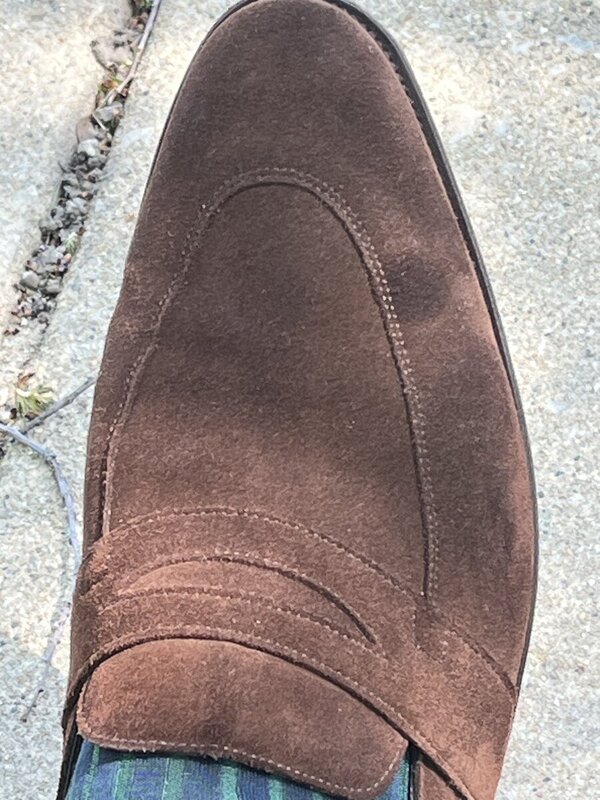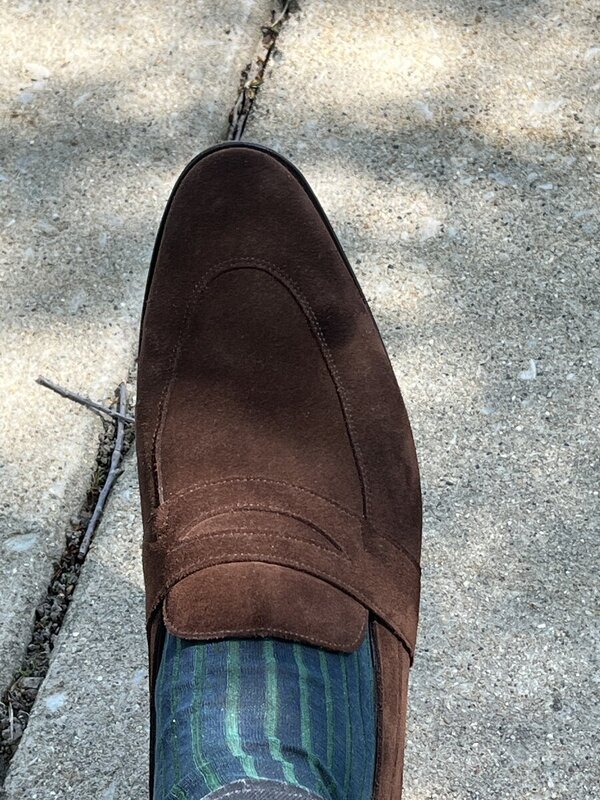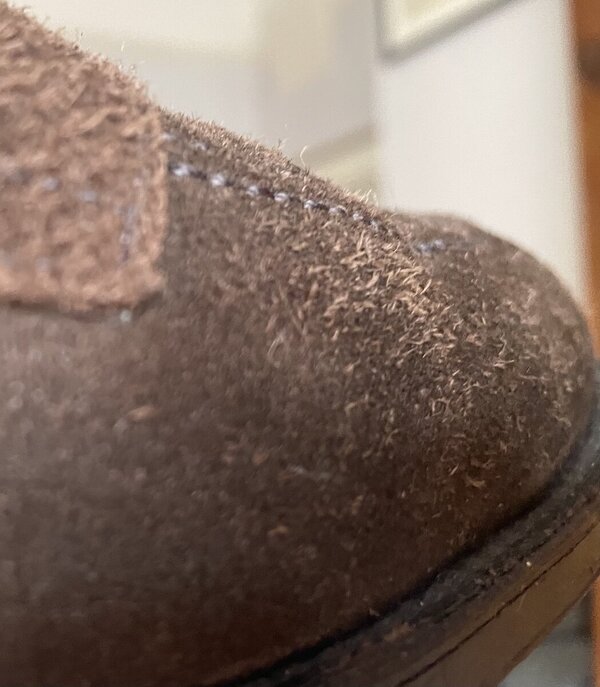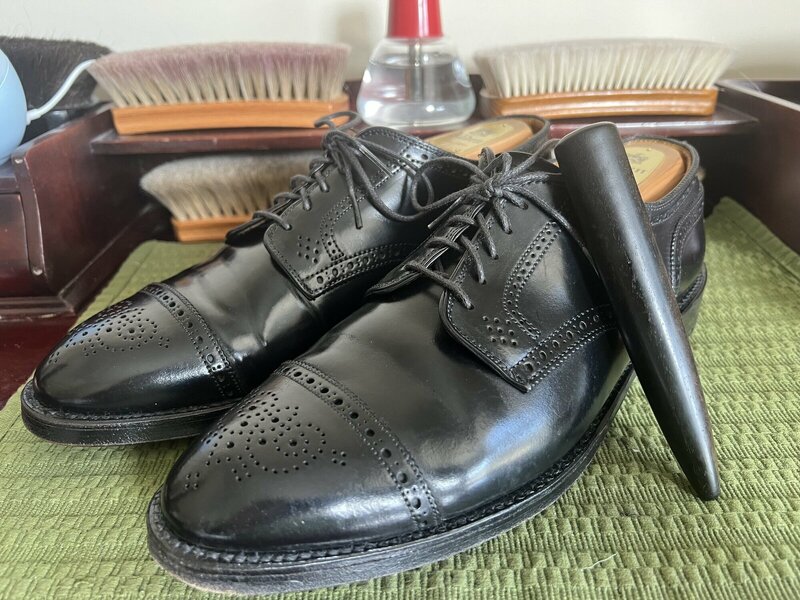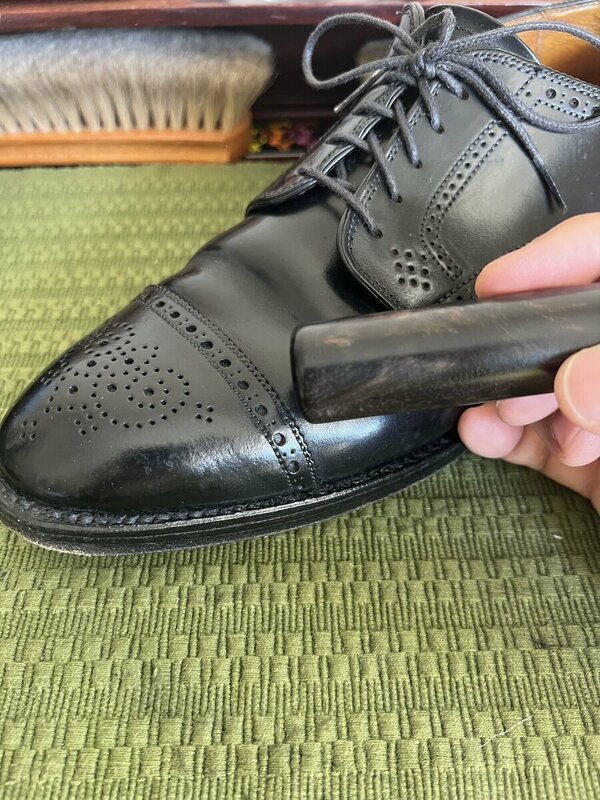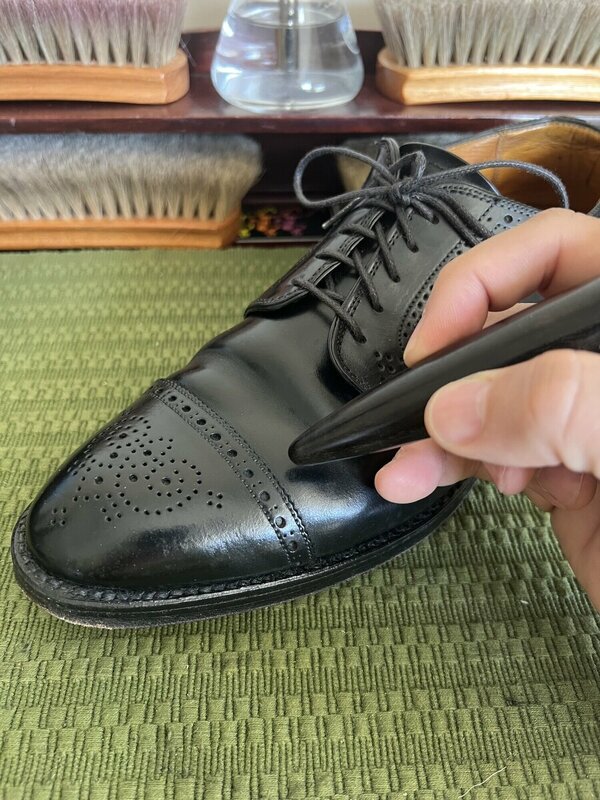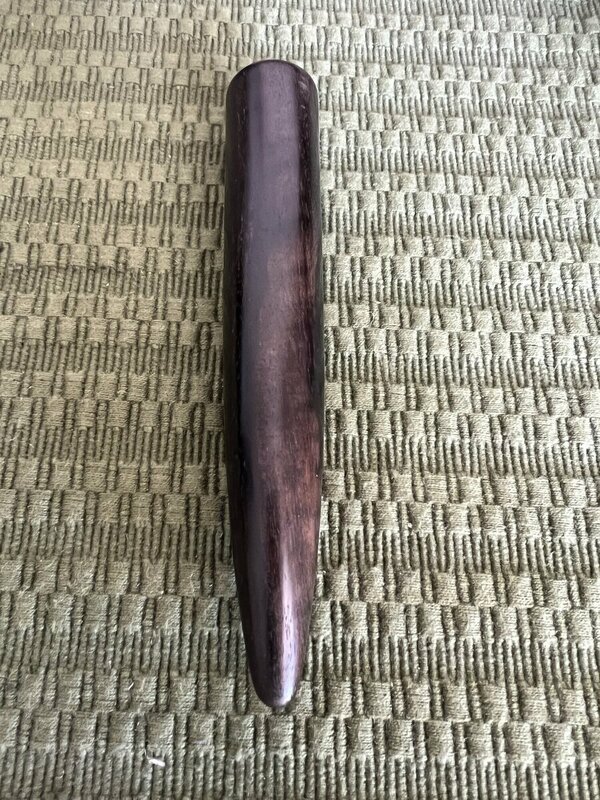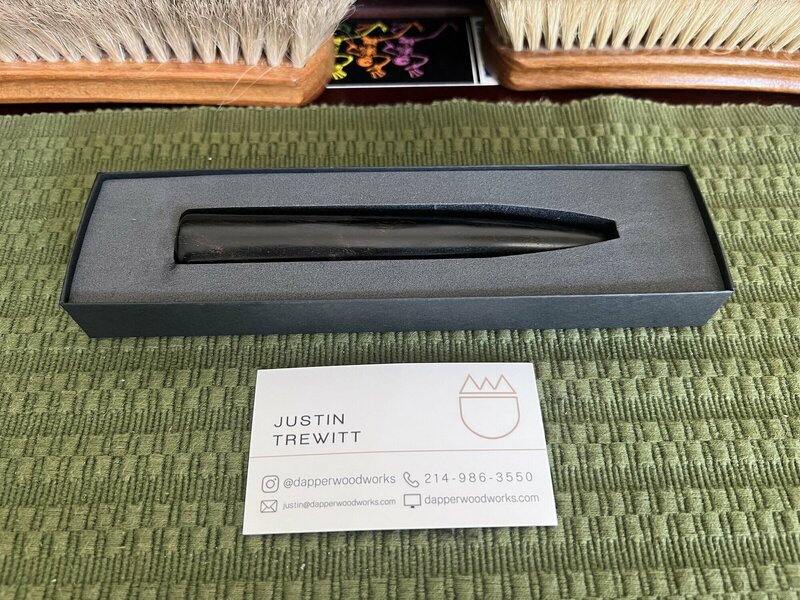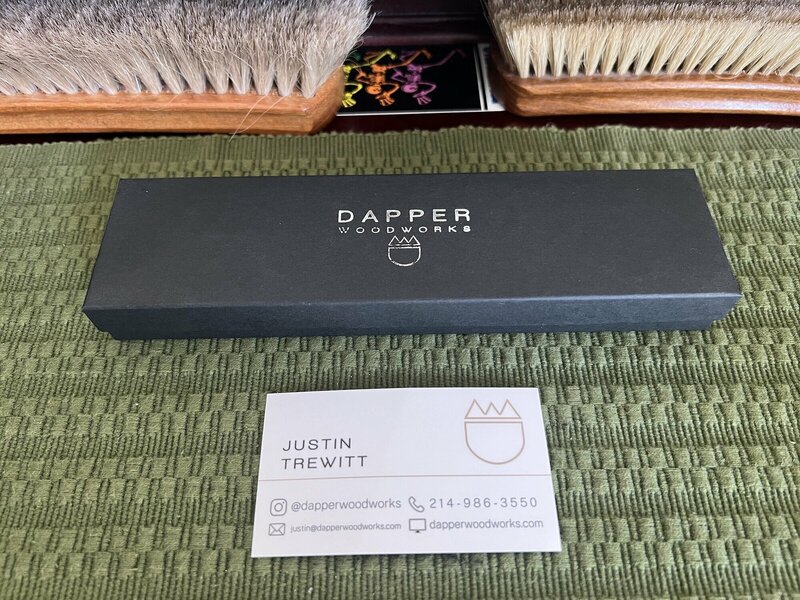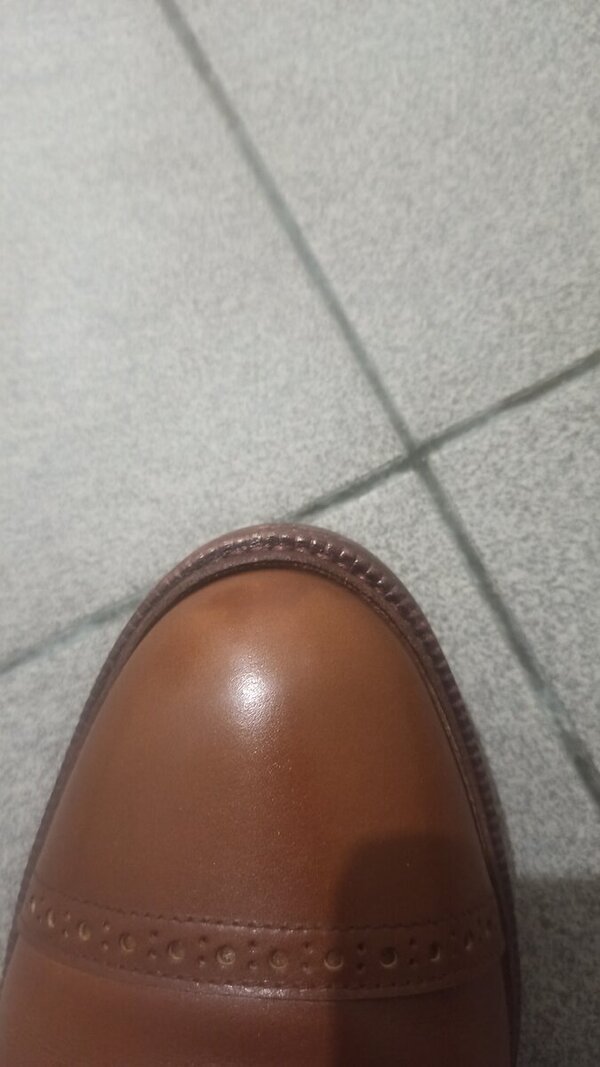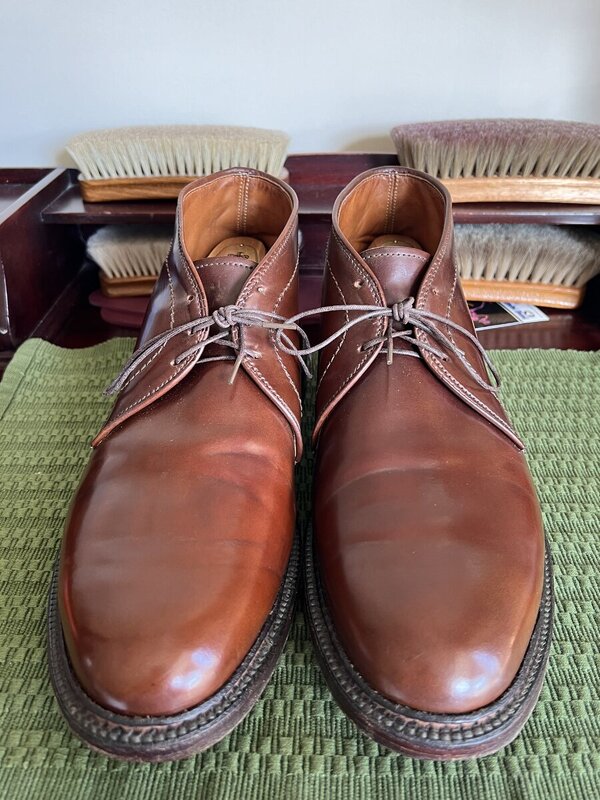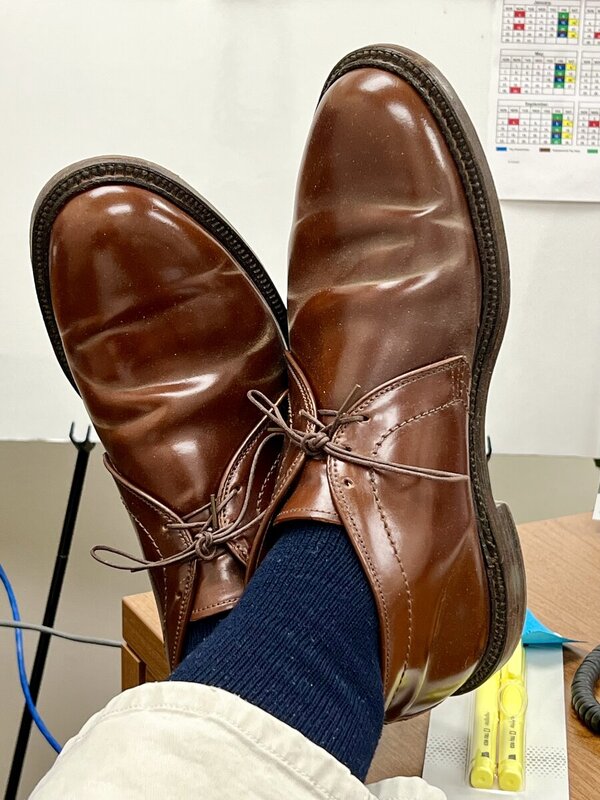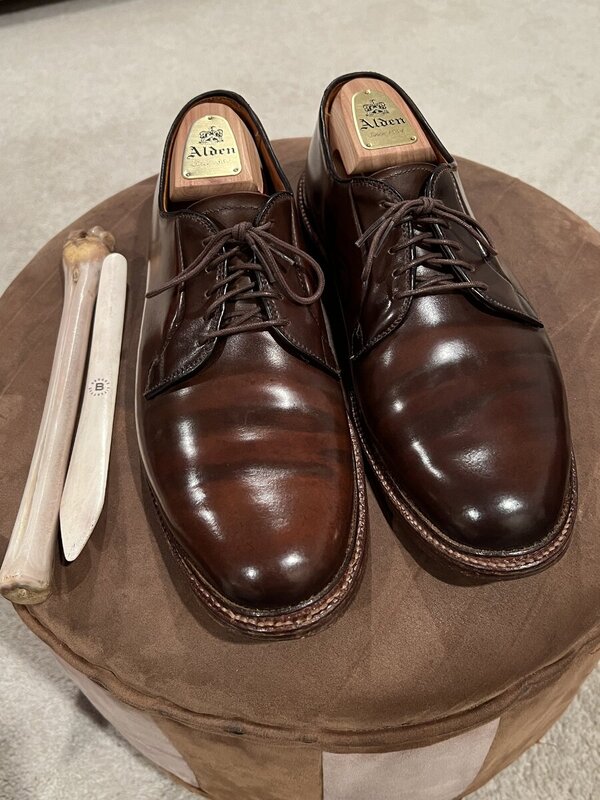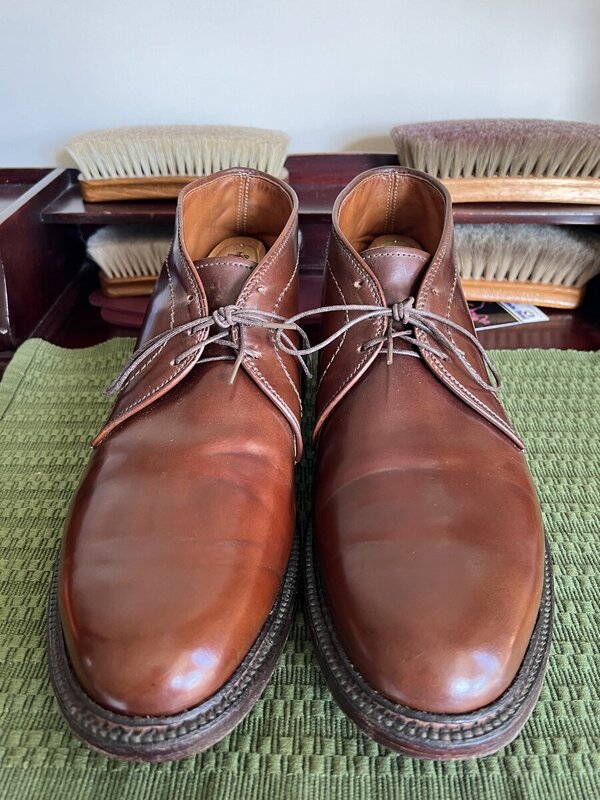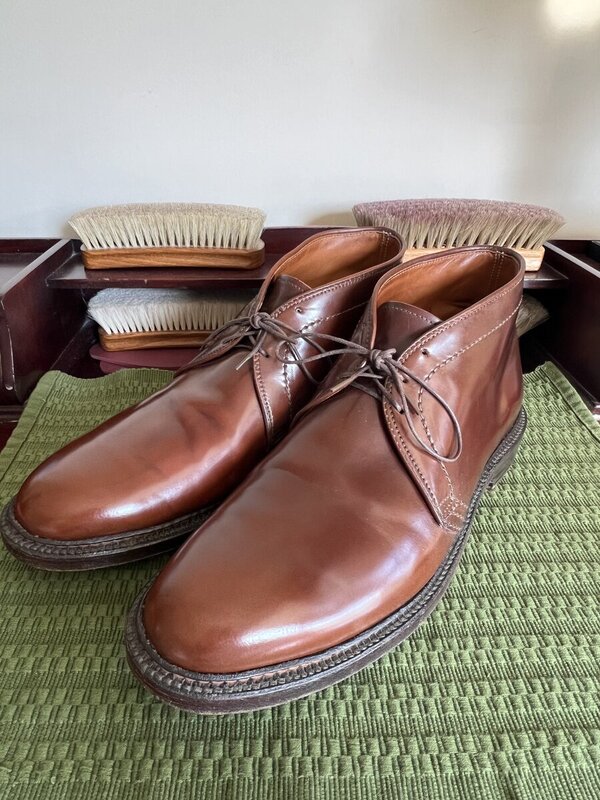Support the forum
Navigation
-
- Men's Style
- Classic Menswear
- Streetwear and Denim
- Preorders, Group Made-to-order, trunk shows, and o
- Menswear Advice
- Former Affiliate Vendor Threads; a Locked Forum.
- Career and job listings in fashion, mens clothing,
-
- American Trench
- AMIDÉ HADELIN
- Archibald London
- The Armoury
- Arterton
- Besnard
- Canoe Club
- Capra Leather
- Carmina
- Cavour
- Crush Store
- De Bonne Facture
- Drinkwater's Cambridge
- Drop93
- eHABERDASHER
- Enzo Custom
- Epaulet
- Exquisite Trimmings
- Fils Unique
- Gentlemen's Footwear
- Giin
- Grant Stone
- House of Huntington
- IsuiT
- John Elliott
- Jonathan Abel
- Kent Wang
- Kirby Allison
- Larimars Clothing
- Lazy Sun
- LuxeSwap
- Luxire Custom Clothing
- Nicks Boots
- No Man Walks Alone
- Once a Day
- Passus shoes
- Proper Cloth
- SARTORIALE
- SEH Kelly
- Self Edge
- Shop the Finest
- Skoaktiebolaget
- Spier and MacKay
- Standard and Strange
- Bespoke Shoemaker Szuba
- Taylor Stitch
- TLB Mallorca
- UNI/FORM LA
- Vanda Fine Clothing
- Von Amper
- Wrong Weather
- Yeossal
- Zam Barrett
Install the app
More options
-
Hi, I am the owner and main administrator of Styleforum. If you find the forum useful and fun, please help support it by buying through the posted links on the forum. Our main, very popular sales thread, where the latest and best sales are listed, are posted HERE
Purchases made through some of our links earns a commission for the forum and allows us to do the work of maintaining and improving it. Finally, thanks for being a part of this community. We realize that there are many choices today on the internet, and we have all of you to thank for making Styleforum the foremost destination for discussions of menswear. -
This site contains affiliate links for which Styleforum may be compensated.
-
STYLE. COMMUNITY. GREAT CLOTHING.
Bored of counting likes on social networks? At Styleforum, you’ll find rousing discussions that go beyond strings of emojis.
Click Here to join Styleforum's thousands of style enthusiasts today!
Styleforum is supported in part by commission earning affiliate links sitewide. Please support us by using them. You may learn more here.
You are using an out of date browser. It may not display this or other websites correctly.
You should upgrade or use an alternative browser.
You should upgrade or use an alternative browser.
**The Official Shoe Care Thread: Tutorials, Photos, etc.**
- Thread starter Mr. Moo
- Start date
- Watchers 1,522
CTBrummie
Senior Member
- Joined
- Jan 26, 2012
- Messages
- 707
- Reaction score
- 198
Saphir tin is what I use too. Nice stuff.
It took me a decent amount of practice but once you've mastered the spitshine it generally won't take that long to 'glaze' a toecap; say 30 min for both. In my experience higher quality leathers are more difficult to glaze though and need a little more time. Best time to do it is whilst watching a film that doesn't demand too much attention : )
Do you find that to be the case? For me, it's the exact opposite - higher-grade leathers are a pleasure to shine because they're so much more responsive than your more bog standard hides.
It didn't take long at all to get this result on these old Church's Masterclass chukkas;
I tend not to mirror shine most of my shoes and boots though, as I'm not convinced that highly-shined shoes pair well with anything other than formal suits. Didn't stop me from bulling everything in sight though when I first learnt how to do it!
glenjay
Senior Member
- Joined
- Feb 13, 2009
- Messages
- 748
- Reaction score
- 199
First, the sole edge and the surface of the sole are two different things. The sole edge will expose more of the leather fiber because that is where the leather has been cut. I would suggest edge dressing for the sole edge. Edge dressing is basically a diluted liquid shellac with a high concentration of dye. This will seal the edge better than saddle soap (although edge dressing tends to wear off). For boots I would suggest a coat of Obenauf's leather oil, or if you like you could use mink oil or dubbin.
As far as conditioning leather soles in general, there are various opinions, mainly because there are pros and cons to doing so:
Sole leather is cow hide that is considerably thicker that leather used for shoe uppers, and is tanned using a different process. The tanning process for sole leather is much longer than for upper leather (oak bark tanning of sole leather can take months). The fat liquoring process is somewhat different as well, as the density and purpose of the leather is different. It is still leather however, but because it serves a different purpose it needs to be cared for a little differently.
The leather in the shoe upper is more sensitive and reactive to the moisture in your feet as it has to allow the moisture to pass through the leather (evaporate) to some degree (this is what is referred to as the leather being able to breath). There is no real barrier between your sweaty sock and the leather upper (other than perhaps a sock liner, if your shoes are fully lined). However, your shoes will always have an insole that acts as a padding and a barrier between your foot and the outsole. Most insoles are made of cork (typical in AE shoes), paperboard, or rubber (high end shoes tend to use leather insoles). The leather upper should be conditioned periodically to replace the oils lost (pushed to the surface and removed) due to perspiration (or other exposure to water).
The leather sole really doesn't deal much (if any) with perspiration, but it does deal with weather conditions. If your shoes are frequently exposed to water then it would make sense to replenish some of the lost oils (so the sole doesn't dry up and crack), and perhaps add a little water protection as well. But if you only step in the occasional puddle, there is no good reason to condition your soles (in my opinion). A leather sole does not need to be as soft and flexible as a leather upper (an effect of conditioning), and softer leather will wear and damage more easily than hard leather.
Winter shoe care.
I had thought that most of the experts recommended against any treatment of soles, saying that the leather is optimally treated for its use, and applications of other substance would be either useless or harmful. Now no less authority than Allen Edmonds says to
"apply a generous amount of saddle soap to the sole edges of all leather sole shoes to moisturize the sole edge and help seal it from the harsh salt and water during the winter months"
Granted, they are selling saddle soap, but what do people think of this advice?
First, the sole edge and the surface of the sole are two different things. The sole edge will expose more of the leather fiber because that is where the leather has been cut. I would suggest edge dressing for the sole edge. Edge dressing is basically a diluted liquid shellac with a high concentration of dye. This will seal the edge better than saddle soap (although edge dressing tends to wear off). For boots I would suggest a coat of Obenauf's leather oil, or if you like you could use mink oil or dubbin.
As far as conditioning leather soles in general, there are various opinions, mainly because there are pros and cons to doing so:
Sole leather is cow hide that is considerably thicker that leather used for shoe uppers, and is tanned using a different process. The tanning process for sole leather is much longer than for upper leather (oak bark tanning of sole leather can take months). The fat liquoring process is somewhat different as well, as the density and purpose of the leather is different. It is still leather however, but because it serves a different purpose it needs to be cared for a little differently.
The leather in the shoe upper is more sensitive and reactive to the moisture in your feet as it has to allow the moisture to pass through the leather (evaporate) to some degree (this is what is referred to as the leather being able to breath). There is no real barrier between your sweaty sock and the leather upper (other than perhaps a sock liner, if your shoes are fully lined). However, your shoes will always have an insole that acts as a padding and a barrier between your foot and the outsole. Most insoles are made of cork (typical in AE shoes), paperboard, or rubber (high end shoes tend to use leather insoles). The leather upper should be conditioned periodically to replace the oils lost (pushed to the surface and removed) due to perspiration (or other exposure to water).
The leather sole really doesn't deal much (if any) with perspiration, but it does deal with weather conditions. If your shoes are frequently exposed to water then it would make sense to replenish some of the lost oils (so the sole doesn't dry up and crack), and perhaps add a little water protection as well. But if you only step in the occasional puddle, there is no good reason to condition your soles (in my opinion). A leather sole does not need to be as soft and flexible as a leather upper (an effect of conditioning), and softer leather will wear and damage more easily than hard leather.
Crat
Distinguished Member
- Joined
- Feb 14, 2011
- Messages
- 1,989
- Reaction score
- 4,434
Ah, but those are oldies. No fair
Right out of the box? Yes, an EG will generally take me more time to glaze than a CJ benchgrade. Its my understanding that this is due to the fact that EG's leather has a firmer texture but correct me if I'm wrong.
That sounds familiar
I now only glaze the tip of the toecap decreasing the shine gradually over the rest of the toecap; I prefer this from an aesthetic viewpoint.
It wil also prevent the glazing from 'breaking' near the end of the toe cap (the part of the leather that flexes when you walk), visible in the picture of your Church's.
A shiny dress shoe with with (the right) jeans is a fine combination imo so I shine most of my shoes this way.
Also, I believe a shoe's leather can dry out beneath a thick layer of wax which is something that we wouldn't want to happen.
This is what i mean by only glazing the tip of the shoe; you can see the pores in the leather gradually becoming less visible towards the tip.



Do you find that to be the case? For me, it's the exact opposite - higher-grade leathers are a pleasure to shine because they're so much more responsive than your more bog standard hides.
Ah, but those are oldies. No fair
Right out of the box? Yes, an EG will generally take me more time to glaze than a CJ benchgrade. Its my understanding that this is due to the fact that EG's leather has a firmer texture but correct me if I'm wrong.
I tend not to mirror shine most of my shoes and boots though, as I'm not convinced that highly-shined shoes pair well with anything other than formal suits. Didn't stop me from bulling everything in sight though when I first learnt how to do it!
That sounds familiar

I now only glaze the tip of the toecap decreasing the shine gradually over the rest of the toecap; I prefer this from an aesthetic viewpoint.
It wil also prevent the glazing from 'breaking' near the end of the toe cap (the part of the leather that flexes when you walk), visible in the picture of your Church's.
A shiny dress shoe with with (the right) jeans is a fine combination imo so I shine most of my shoes this way.
Also, I believe a shoe's leather can dry out beneath a thick layer of wax which is something that we wouldn't want to happen.
This is what i mean by only glazing the tip of the shoe; you can see the pores in the leather gradually becoming less visible towards the tip.
Last edited:
This is a strange one, but I've recently been wearing a pair of brogue-alikes (buckminsters by visvim - I know, not proper shoes) - but after a few weeks wear a weird wrinkling has started to appear on the inside of the quarter and heel - not the usual creasing that appaears at the toe but a noticeable difference in the texture of the leather. And this has only happened on one foot. On the other, the leather still appears to have a waxy, shiny and non-creased appearance.
Can the leather be restored to this condition?
(When not worn these have been kept with shoe trees etc.)
Thanks for your help
Can the leather be restored to this condition?
(When not worn these have been kept with shoe trees etc.)
Thanks for your help
chogall
Distinguished Member
- Joined
- Aug 12, 2011
- Messages
- 6,562
- Reaction score
- 1,166
EG is easier to shine because they came out of the factory already with layers of cream and wax.
Personally I bull all black cap toes calfs and for non black shoes I do a gradual bull at toe tip.
Personally I bull all black cap toes calfs and for non black shoes I do a gradual bull at toe tip.
Last edited:
Euxeus
Member
- Joined
- Nov 23, 2012
- Messages
- 7
- Reaction score
- 0
I've posted this question already in it's owned thread but it got overtaken by a troll and somebody recommended that I post my question in this thread.
I read that it was a good idea to polish new shows as it gives them extra protection. My new C&J Malton shoes didn't look like they needed a polish but I thought I would try it anyway to be on the safe side. I had not polished shoes before but I'd a few read guides here and watched videos online to get an idea of what I was doing.
However I think I made quite a few mistakes:
The result of these mistakes is that the toecap on one of the shoes has became noticeably darker than the toecap on the other shoe. At first it was a dull brown whilst the other shoe's toecap was a uniform colour with the rest of the shoe.
The day after attempting to shine my shoes I went to my local shoe-shine, the girl there told me not to worry about them as the dark mark was probably water retained in the leather (from mistake 1), she said that it should be gone in 24 hours. She shined both shoes up to how they look now, 6 days later:


In real life the dark mark and the difference in color is more noticeable than what the photos show.
So what's the diagnosis now? Is the leather still drying our or have I done some more serious damage? If I have damaged them then is there anything a decent cobbler could do?
Thanks.
I read that it was a good idea to polish new shows as it gives them extra protection. My new C&J Malton shoes didn't look like they needed a polish but I thought I would try it anyway to be on the safe side. I had not polished shoes before but I'd a few read guides here and watched videos online to get an idea of what I was doing.
However I think I made quite a few mistakes:
- I applied drops of water directly on to the shoe.
- I rubbed the leather quite hard with a cloth and for quite a long time (at least 15 mins)
- I applied at least 7 layers of polish as I couldn't see the leather getting any shinier.
The result of these mistakes is that the toecap on one of the shoes has became noticeably darker than the toecap on the other shoe. At first it was a dull brown whilst the other shoe's toecap was a uniform colour with the rest of the shoe.
The day after attempting to shine my shoes I went to my local shoe-shine, the girl there told me not to worry about them as the dark mark was probably water retained in the leather (from mistake 1), she said that it should be gone in 24 hours. She shined both shoes up to how they look now, 6 days later:
In real life the dark mark and the difference in color is more noticeable than what the photos show.
So what's the diagnosis now? Is the leather still drying our or have I done some more serious damage? If I have damaged them then is there anything a decent cobbler could do?
Thanks.
MoneyWellSpent
Distinguished Member
- Joined
- Oct 4, 2012
- Messages
- 2,697
- Reaction score
- 1,178
I agree with your overall statements. I don't mean to nit-pick, but just thought I would clarify some of the phrasing in bold as it relates to a proper understanding of shoe construction. Also, I apologize if you were referring to shoes as a whole rather than shoes that are typically discussed in this thread (bespoke, hand-welted, or quality goodyear welted). Moccosin construction, Blake stitched, and others do pose some different scenarios, and I am not including those. That said, I think that unlined shoes are generally an exception to the rule, and they aren't very common. Generally unlined shoes are suede, or sometimes shell cordovan, and the manufacterer is going after a more flexible supple shoe right off the shelf. Most shoes are fully lined. The sock liner is not synonymous with the shoe liner. The sock liner is simply the piece of leather that is resting under your foot (between your foot and the insole) and often has a cushioned heel pad. Allen Edmonds does not use sock liners in most of their shoes, so your foot is directly resting on the natural leather insole. Alden, and most others uses a 3/4 length sock liner, and some use full length sock liners. Typically, bespoke and hand-welted shoes are likely to have a full length sock liner to cover up the ugly nail holes that result in the leather insole during shoemaking. The insole of quality goodyear welted shoes is leather. Cheaper goodyear welted shoes may use leatherboard or fiberboard insoles. Cork is filling the void created by the gemming rib under the insole, between the insole and the outsole. Allen Edmonds and every company that is "better" than them, uses cork as a void filler underneath a natural leather insole. Obviously if we start talking cheap shoes (cemented, or other) then there are many variations on how shoes are made, but I think it is safe to assume that most in this forum are concerned with one of the types of shoes mentioned above. Again, sorry to nit-pick, but shoe construction is a big interest of mine.First, the sole edge and the surface of the sole are two different things. The sole edge will expose more of the leather fiber because that is where the leather has been cut. I would suggest edge dressing for the sole edge. Edge dressing is basically a diluted liquid shellac with a high concentration of dye. This will seal the edge better than saddle soap (although edge dressing tends to wear off). For boots I would suggest a coat of Obenauf's leather oil, or if you like you could use mink oil or dubbin.
As far as conditioning leather soles in general, there are various opinions, mainly because there are pros and cons to doing so:
Sole leather is cow hide that is considerably thicker that leather used for shoe uppers, and is tanned using a different process. The tanning process for sole leather is much longer than for upper leather (oak bark tanning of sole leather can take months). The fat liquoring process is somewhat different as well, as the density and purpose of the leather is different. It is still leather however, but because it serves a different purpose it needs to be cared for a little differently.
The leather in the shoe upper is more sensitive and reactive to the moisture in your feet as it has to allow the moisture to pass through the leather (evaporate) to some degree (this is what is referred to as the leather being able to breath). There is no real barrier between your sweaty sock and the leather upper (other than perhaps a sock liner, if your shoes are fully lined). However, your shoes will always have an insole that acts as a padding and a barrier between your foot and the outsole. Most insoles are made of cork (typical in AE shoes), paperboard, or rubber (high end shoes tend to use leather insoles). The leather upper should be conditioned periodically to replace the oils lost (pushed to the surface and removed) due to perspiration (or other exposure to water).
The leather sole really doesn't deal much (if any) with perspiration, but it does deal with weather conditions. If your shoes are frequently exposed to water then it would make sense to replenish some of the lost oils (so the sole doesn't dry up and crack), and perhaps add a little water protection as well. But if you only step in the occasional puddle, there is no good reason to condition your soles (in my opinion). A leather sole does not need to be as soft and flexible as a leather upper (an effect of conditioning), and softer leather will wear and damage more easily than hard leather.
Last edited:
alexSF
Distinguished Member
- Joined
- Dec 10, 2009
- Messages
- 3,363
- Reaction score
- 340
High quality shoes are easy to shine also because they are lasted better (especially when handlasted) and for more time.
Being the leather more stretched and adherent over the last, pores of the leather (that are less pronunced) could be easily filled with the polish.
EG is easier to shine because they came out of the factory already with layers of cream and wax.
Personally I bull all black cap toes calfs and for non black shoes I do a gradual bull at toe tip.
High quality shoes are easy to shine also because they are lasted better (especially when handlasted) and for more time.
Being the leather more stretched and adherent over the last, pores of the leather (that are less pronunced) could be easily filled with the polish.
Last edited:
Cheuk
Well-Known Member
- Joined
- Nov 5, 2012
- Messages
- 46
- Reaction score
- 2
Hello,
Comments on these, or any suggestions on how to spruce them up? They are some old shell Florsheims I stumbled across. Sorry about the flash, although perhaps it clarifies the issues that concern me. Note the creasing that looks a bit excessive to me, and also the dark patches in the creases. I haven't done a thing to them yet, though am unsure of the care (or lack) they had before.
Thanks for your insight and wisdom.



Comments on these, or any suggestions on how to spruce them up? They are some old shell Florsheims I stumbled across. Sorry about the flash, although perhaps it clarifies the issues that concern me. Note the creasing that looks a bit excessive to me, and also the dark patches in the creases. I haven't done a thing to them yet, though am unsure of the care (or lack) they had before.
Thanks for your insight and wisdom.
Gdot
Distinguished Member
- Joined
- Jun 14, 2011
- Messages
- 5,247
- Reaction score
- 294
The depth and roll of the creases is what it is and there is pretty much nothing you can do about it. As to the darkness in the creases this can be buffed out - brush each shoe vigorously for 10-20 minutes EACH. This should brighten them up considerably. You may also do well to apply something to moisturize/loosen the existing buildup on the shoes - leather lotion, saphir renovateur, etc. etc. should be fine.Hello, Comments on these, or any suggestions on how to spruce them up? They are some old shell Florsheims I stumbled across. Sorry about the flash, although perhaps it clarifies the issues that concern me. Note the creasing that looks a bit excessive to me, and also the dark patches in the creases. I haven't done a thing to them yet, though am unsure of the care (or lack) they had before. Thanks for your insight and wisdom.


lucidream
Active Member
- Joined
- Dec 29, 2012
- Messages
- 43
- Reaction score
- 2
I told myself not to buy any shoes made in china, but these were fairly inexpensive ($60 marked down clearance from $180) and had leather upper, lining, and sole. Regardless, I prepped them last night (see post at the top of this page), and wore them for the first time today. It seems evident to me that the finish is coming off. Would my waxing have accelerated this? Main question is whether or not these are salvageable. I don't mind making these beaters and no longer wearing them to work, but if I can salvage them with reasonable effort at home, I would appreciate the advice.
Last edited:
dbhdnhdbh
Senior Member
- Joined
- Sep 3, 2012
- Messages
- 333
- Reaction score
- 46
Re: saddle soap. I have seen what AE says on their site. The language I quoted came from a merketting email. It seemed strange, given what others, including AE have said about sole care. I'm holding off unless I hear otherwise from one of our experts.
Thanks
Thanks
glenjay
Senior Member
- Joined
- Feb 13, 2009
- Messages
- 748
- Reaction score
- 199
Thank you for the clarification on the sock liner / shoe liner distinction. I found your more detailed explanation of the insole construction helpful as well. My point being that there is a greater moisture barrier between the bottom of your foot and the leather sole, than there is between the top of your foot and the leather upper.
I am here to learn as much as I can, while also sharing my current understanding. I welcome any knowledgeable clarifications or corrections, and it benefits the membership as well.
I agree with your overall statements. I don't mean to nit-pick, but just thought I would clarify some of the phrasing in bold as it relates to a proper understanding of shoe construction. Also, I apologize if you were referring to shoes as a whole rather than shoes that are typically discussed in this thread (bespoke, hand-welted, or quality goodyear welted). Moccosin construction, Blake stitched, and others do pose some different scenarios, and I am not including those. That said, I think that unlined shoes are generally an exception to the rule, and they aren't very common. Generally unlined shoes are suede, or sometimes shell cordovan, and the manufacterer is going after a more flexible supple shoe right off the shelf. Most shoes are fully lined. The sock liner is not synonymous with the shoe liner. The sock liner is simply the piece of leather that is resting under your foot (between your foot and the insole) and often has a cushioned heel pad. Allen Edmonds does not use sock liners in most of their shoes, so your foot is directly resting on the natural leather insole. Alden, and most others uses a 3/4 length sock liner, and some use full length sock liners. Typically, bespoke and hand-welted shoes are likely to have a full length sock liner to cover up the ugly nail holes that result in the leather insole during shoemaking. The insole of quality goodyear welted shoes is leather. Cheaper goodyear welted shoes may use leatherboard or fiberboard insoles. Cork is filling the void created by the gemming rib under the insole, between the insole and the outsole. Allen Edmonds and every company that is "better" than them, uses cork as a void filler underneath a natural leather insole. Obviously if we start talking cheap shoes (cemented, or other) then there are many variations on how shoes are made, but I think it is safe to assume that most in this forum are concerned with one of the types of shoes mentioned above. Again, sorry to nit-pick, but shoe construction is a big interest of mine.
Thank you for the clarification on the sock liner / shoe liner distinction. I found your more detailed explanation of the insole construction helpful as well. My point being that there is a greater moisture barrier between the bottom of your foot and the leather sole, than there is between the top of your foot and the leather upper.
I am here to learn as much as I can, while also sharing my current understanding. I welcome any knowledgeable clarifications or corrections, and it benefits the membership as well.
Classic Menswear Featured products
-
Carmina - Norwegian Derby Shoes Introducing the classy six eyelet split toe derby in a burgundy Shell Cordovan from Horween Chicago. This style features a single oak-bark tanned sole from Rendembach Jr. and full calf lining color brown.
-
 LuxeSwap Auction - Vintage Antique United States Naval Navy Denim Deck Jacket A piece for denim heads, vintage collectors, streetwear enthusiasts and menswear enthusiasts alike, this extremely rare early US Naval issued deck jacket in raw denim is not likely to ever show up at auction again anytime soon. A Haleys Comet of menswear items, offered at auction at a $9.99 starting bid with no reserve.
LuxeSwap Auction - Vintage Antique United States Naval Navy Denim Deck Jacket A piece for denim heads, vintage collectors, streetwear enthusiasts and menswear enthusiasts alike, this extremely rare early US Naval issued deck jacket in raw denim is not likely to ever show up at auction again anytime soon. A Haleys Comet of menswear items, offered at auction at a $9.99 starting bid with no reserve. -
 Kirby Allison - Luxury Suit Hanger - $32 Kirby Allison's Luxury Wooden Suit Hangers protect your suits from stretched collars and droopy shoulders. Our wooden suit hangers provide five-times more support than average hangers and will protect and extend the life of your most important garments.
Kirby Allison - Luxury Suit Hanger - $32 Kirby Allison's Luxury Wooden Suit Hangers protect your suits from stretched collars and droopy shoulders. Our wooden suit hangers provide five-times more support than average hangers and will protect and extend the life of your most important garments.
FEATURED PRODUCTS
-
 LuxeSwap Auction - Vintage Antique United States Naval Navy Denim Deck Jacket
A piece for denim heads, vintage collectors, streetwear enthusiasts and menswear enthusiasts alike, this extremely rare early US Naval issued deck jacket in raw denim is not likely to ever show up at auction again anytime soon. A Haleys Comet of menswear items, offered at auction at a $9.99 starting bid with no reserve.
LuxeSwap Auction - Vintage Antique United States Naval Navy Denim Deck Jacket
A piece for denim heads, vintage collectors, streetwear enthusiasts and menswear enthusiasts alike, this extremely rare early US Naval issued deck jacket in raw denim is not likely to ever show up at auction again anytime soon. A Haleys Comet of menswear items, offered at auction at a $9.99 starting bid with no reserve.
-
 Wellington Chore Boot - Special Introductory Price! $495
Introducing the latest addition to Nicks Handmade Boots collection: The Wellington Chore Boot. Engineered for the rigors of daily tasks, this boot is more than just footwear; it's a reliable companion for your everyday adventures. Crafted with convenience in mind, its effortless pull-on design ensures you're always ready to tackle whatever the day throws your way.
Wellington Chore Boot - Special Introductory Price! $495
Introducing the latest addition to Nicks Handmade Boots collection: The Wellington Chore Boot. Engineered for the rigors of daily tasks, this boot is more than just footwear; it's a reliable companion for your everyday adventures. Crafted with convenience in mind, its effortless pull-on design ensures you're always ready to tackle whatever the day throws your way.
-
Besnard - Made to Order Trousers - $351 Design your ideal pair of trousers by selecting a fabric, deciding between single or double pleats, choosing a zip or button fly, and opting for side adjusters or belt loops.
Latest posts
- Replies
- 39,844
- Views
- 5,877,508
- Replies
- 86,602
- Views
- 14,636,882
- Replies
- 637
- Views
- 221,835
- Replies
- 84,252
- Views
- 12,462,401
Similar threads
- Replies
- 17
- Views
- 14,521
- Locked
- Replies
- 5,548
- Views
- 796,102
- Replies
- 9
- Views
- 2,139
- Replies
- 3
- Views
- 9,045
Featured Sponsor
Forum Sponsors
- American Trench
- AMIDÉ HADELIN
- Archibald London
- The Armoury
- Arterton
- Besnard
- Canoe Club
- Capra Leather
- Carmina
- Cavour
- Crush Store
- De Bonne Facture
- Drinkwater's Cambridge
- Drop93
- eHABERDASHER
- Enzo Custom
- Epaulet
- Exquisite Trimmings
- Fils Unique
- Gentlemen's Footwear
- Giin
- Grant Stone
- House of Huntington
- IsuiT
- John Elliott
- Jonathan Abel
- Kent Wang
- Kirby Allison
- Larimars Clothing
- Lazy Sun
- LuxeSwap
- Luxire Custom Clothing
- Nicks Boots
- No Man Walks Alone
- Once a Day
- Passus shoes
- Proper Cloth
- SARTORIALE
- SEH Kelly
- Self Edge
- Shop the Finest
- Skoaktiebolaget
- Spier and MacKay
- Standard and Strange
- Bespoke Shoemaker Szuba
- Taylor Stitch
- TLB Mallorca
- UNI/FORM LA
- Vanda Fine Clothing
- Von Amper
- Wrong Weather
- Yeossal
- Zam Barrett
Members online
- stubbsj20
- Surd
- rainmaker
- malcb33
- Qn451
- gonnagetmine
- dme2406
- JayDotz
- sononchalant
- wolfshack
- The Quiet Owl
- TheFoo
- rapide66
- dresden
- tweedlover
- tbdv
- serbarristan
- C_kimlin920
- Hombre Secreto
- HorseHide
- Sartoriamo
- abantigen
- MrBaho
- JessBob
- koodlet
- Jnarcane
- JohnyY
- Clowdify
- shootsfilmwithbullet
- ilikethelights
- JPQ
- ppk
- eddyroxx
- thatboyo
- tdang
- Tresdin
- comrade
- kami
- Chaconne
- Betta
- sartoria vacua
- Baron
- wklq76a
- alwaysanalien
- Gibonius
- The_Tannhauser
Total: 2,167 (members: 72, guests: 2,095)















